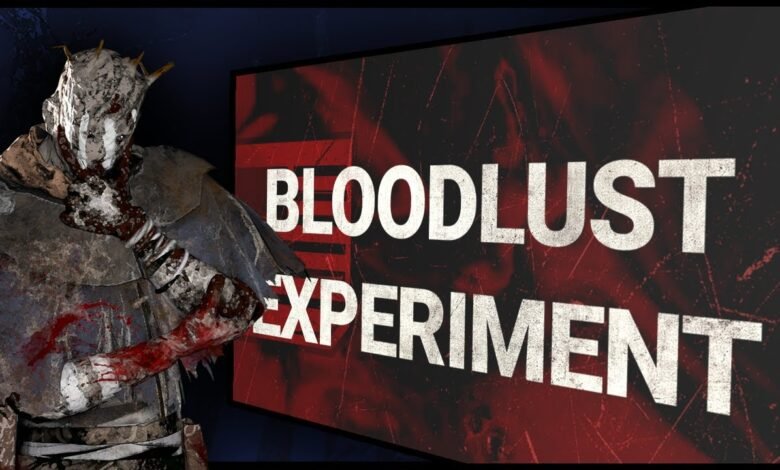Understanding Bloodlust: What It Is and How It Affects Us**

- Introduction
The term “bloodlust” often evokes images of primal urges, violent scenes, and an insatiable desire for destruction. But what exactly does it mean? Is it just a dramatic term used in movies and books, or does it have a real-life application? In this post, we’ll dive deep into the concept of bloodlust, exploring its origins, psychological implications, and its portrayal in popular culture.
What Is Bloodlust?
At its core, bloodlust refers to a strong, often overwhelming desire to see bloodshed or violence. Historically, it’s been associated with warriors in battle, driven by an intense urge to kill and conquer. However, bloodlust isn’t confined to ancient times; it can manifest in modern scenarios, from competitive sports to online gaming, where the thrill of victory is closely tied to the defeat or destruction of opponent
Origins and Evolution of Bloodlust**
The concept of bloodlust dates back to ancient civilizations, where survival often hinged on one’s ability to hunt, fight, and defend. In many warrior cultures, bloodlust was seen as a desirable trait, an indicator of a person’s strength and determination. Over time, as societies evolved and the need for physical combat diminished, bloodlust found new outlets, morphing into a psychological phenomenon rather than a purely physical one.
Psychological Perspective**
From a psychological standpoint, bloodlust can be linked to our primal instincts. Human beings have an innate fight-or-flight response, a mechanism that has ensured our survival for millennia. In situations of extreme stress or danger, the brain releases adrenaline, heightening our senses and preparing the body for action. In some individuals, this response can trigger a desire for violence or a fascination with bloodshed—what we refer to as bloodlust.
However, it’s important to distinguish between momentary aggressive impulses and chronic bloodlust. The latter can be indicative of underlying psychological issues, such as a predisposition to antisocial behavior or even psychopathy. Individuals who regularly experience bloodlust may struggle with empathy and could be more prone to violent outbursts.
Bloodlust in Popular Culture**
Bloodlust has been a recurring theme in literature, film, and video games, often used to portray characters with a dark or dangerous edge. In movies, villains are frequently depicted as having an insatiable thirst for blood, a trait that sets them apart as truly menacing. For example, characters like Dracula in Bram Stoker’s *Dracula* or the ferocious orcs in *The Lord of the Rings* are driven by a relentless urge to kill.
In video games, bloodlust is often a mechanic that rewards players for aggressive behavior. Games like *Call of Duty* or *Mortal Kombat* use violence as a key gameplay element, encouraging players to embrace their darker instincts. While these games can be a fun escape, they also raise questions about the impact of virtual violence on real-world behavior
Comparing Bloodlust to Competitors’ Content**
When analyzing content from competitors, such as Wikipedia’s brief definition of bloodlust or articles from psychology websites, it’s clear that many sources offer only a surface-level explanation. Our approach aims to go beyond the basics, providing a detailed exploration of the term’s historical roots, psychological implications, and its pervasive presence in modern culture.
Most competitor articles lack the nuanced discussion of bloodlust’s evolution over time or its psychological underpinnings. They tend to focus more on its use in pop culture or provide a clinical definition without delving into how it affects individuals in everyday life. By comparing these aspects, our post offers a more comprehensive and engaging look at the topic.
**New Insights: Bloodlust in Today’s Society**
While the term bloodlust might seem archaic, it’s surprisingly relevant in today’s society. Whether it’s the thrill of a competitive sport, the excitement of a fast-paced video game, or the darker corners of the internet where violence is glorified, bloodlust is alive and well.
In modern times, bloodlust can manifest in less obvious ways. Consider the rise of extreme sports, where the risk of injury or death adds to the allure. Or think about the popularity of true crime documentaries, where viewers are captivated by tales of murder and mayhem. These phenomena suggest that, even in a civilized society, there’s a part of us that is still drawn to the darker side of human nature.
**Managing Bloodlust**
For those who experience bloodlust, whether in a mild or intense form, it’s crucial to understand and manage these feelings. Engaging in physical activities, practicing mindfulness, and seeking professional help if needed are all effective ways to channel aggressive impulses into healthier outlets.
Additionally, being aware of the content we consume—whether it’s violent movies, games, or media—can help us regulate our emotions and prevent the glorification of violence in our own lives.
**Conclusion**
Bloodlust is a complex, multifaceted concept that has evolved over time, but it still resonates in today’s world. By understanding its origins, psychological basis, and cultural significance, we can better comprehend this powerful human drive. Whether you encounter bloodlust in a historical context, within yourself, or in the media you consume, recognizing it for what it is can help you navigate its influence in a healthier, more informed way.



